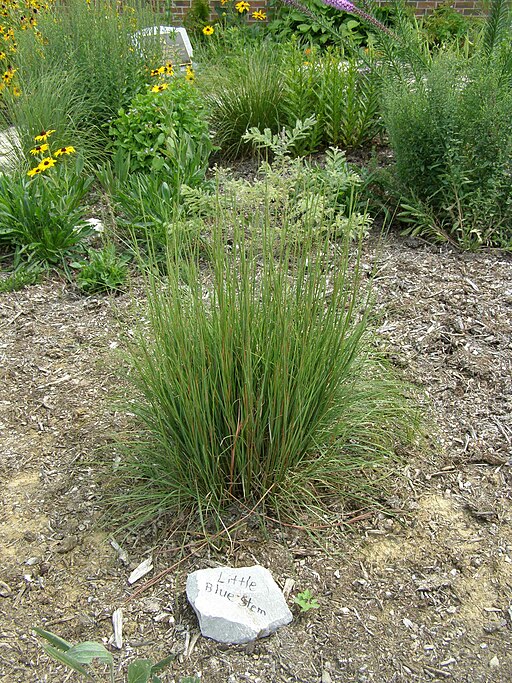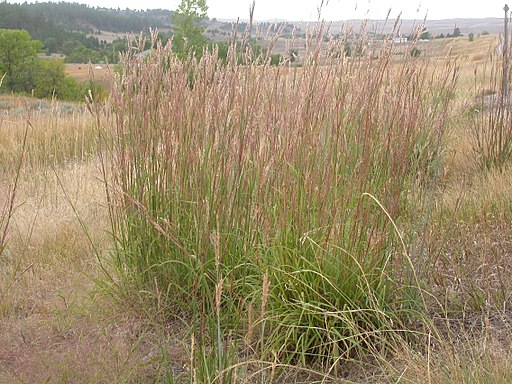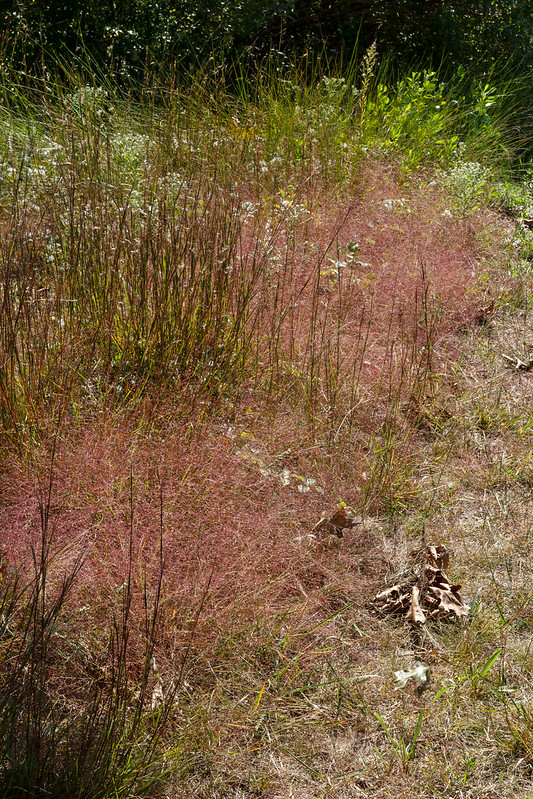With native plants, the most popular species tend to be showy wildflowers with colorful blooms. And among those of us passionate about conservation and rewilding, tree planting is typically the top activity.
But there’s one aspect of native plants that can unite these goals and any other gardener concerned with ecosystem health: planting native grasses.
Native grasses are often overlooked but they are beneficial in a variety of ways.
Benefits of Native Grasses from Maintenance to Ecosystem Services
Easy to Grow: Grasses are some of the most low maintenance plants you can add to a garden. They experience very few pests or diseases and no supplemental water or fertilizer are needed once established.
Useful Roots: The strong fibrous root systems of native grasses help stabilize the soil and control erosion. They also “reduce sedimentation and mitigate the effects of storm events.”
In a garden setting with other plants, root competition from grasses help other perennials grow straighter and also flop over less.
Native grasses have adapted to a variety of tough environmental conditions, as explained by one article:
“Drought-tolerant grasses, such as blue grama and side-oats grama, do well in heat-stricken areas near roadsides or as plantings in parking lots where they are exposed to sun all day long. Others, like lake sedge, tussock sedge, or bottlebrush sedge, can handle changes in water levels and can tolerate standing water, so work well in rain gardens that receive a lot of stormwater runoff.”
How Native Grasses Support Pollinators and Wildlife
Because of the previously mentioned lack of conspicuous flowers to attract butterflies and bees, native plant gardeners might not think of grasses in terms of support for insects and pollinators.
But they serve as a host plant for large numbers of butterfly and moth larvae, in particular skippers and other specialist butterflies that can only feed on a small number of plant species. Some specific species include the Arogos Skipper, Delaware Skipper, and Dusted Skipper (use big bluestem as a host), and the Cobweb Skipper, Dusted Skipper, Ottoe Skipper, Delaware Skipper, Crossline Skipper and Swarthy Skipper (use little bluestem as a host).
These pollinators also rely on the grasses for shelter that is specific to their form, as “dense foliage and upright growth form create microhabitats where insects are protected from adverse weather conditions, predators, or disturbances”
Native grasses also support wildlife far up the food chain as well, offering habitat for small animals, seeds to feed birds (not to mention the aforementioned specialist caterpillars) and also nesting materials.
Aesthetic and Ornamental Qualities of Native Grasses
It may be necessary to point out that “grass” in this context does not typically refer to a lawn-like groundcover (although some native sedges can potentially play this role), but rather clumping-type of grasses that can be anywhere from a couple to 6 or 7 feet tall.
In this context they can fit very well even into traditional gardens and have significant ornamental features such as attractive distinctive seed heads that can persist long into the winter months.
Grasses can shine in the garden either interspersed with flowering perennials or on their own as a specimen plant.
Grasses are already commonly used in many garden settings but unfortunately are often nonnative varieties like miscanthus, pampas grass, and fountain grass that don’t provide many of the same benefits to wildlife and can even be invasive in some cases.
In many cases there are native grasses that can be just as striking as a garden focal point than the widespread nonnative species.
Best Native Grasses to Plant in Your Garden
We’ve already mentioned some good candidates for specific tough conditions (dry or wet) in the “benefits” section above.
In addition, of the most popular native grasses in a garden setting include big bluestem, little bluestem, prairie dropseed, sideoats granna, and purple lovegrass.
Native Grasses for Rewilding and Ecosystem Restoration
We’ve already explained a few reasons why grasses tend to be overlooked, and this is also true in terms of using them to help restore degraded environments. This is summed up well in the book Rewilding by Blythe and Jepson:
“When thinking about how to restore the planet, most of us probably imagine trees instead of grasses. Grasses seem somehow domesticated: we know them as sports pitches, lawns, pastures, and vast field of wheat. Easy to overlook fact that humble grasses are the basis of one of our planet’s most productive ecosystems–and one that we could restore and rewild. This is just what scientists are starting to think.”
Some of this research is changing our understanding of the “natural vegetation” of most of the world including the US. It is shedding light on the role of grazing and disturbance by large herbivores that have helped shape it, arguing that “grassland herbivore systems were once much more widespread, and that is therefore the ‘natural’ situation for our planet” before these megafauna began to go extinct around 130,000 years ago.
Researchers are questioning the assumptions that North America was a vast, untouched wilderness consisting mostly of woodlands prior to European colonization, as more evidence emerges of how indigenous groups have managed and cultivated large areas for many thousands of years.
These more macro understandings of ecosystem dynamics are largely beyond the scope of this website that focuses on personal gardens, but it nevertheless is important context for why adding native grasses to your yard can bring benefits far exceeding what you might have assumed. We hope this article has inspired you to give them a closer look!



Leave a Reply